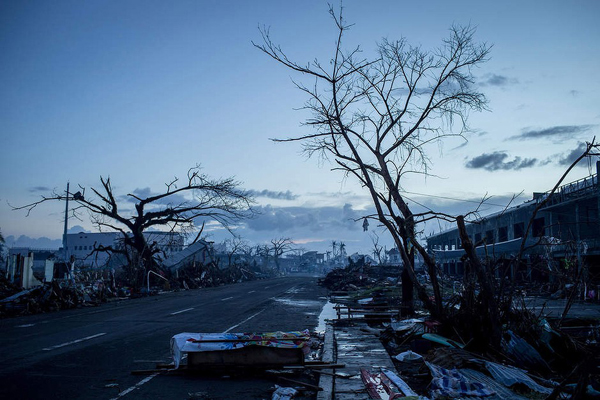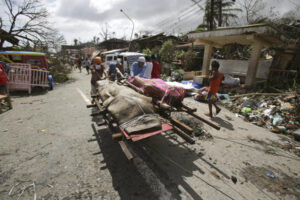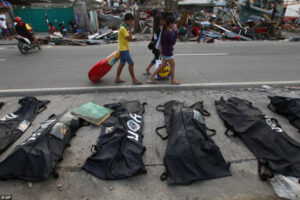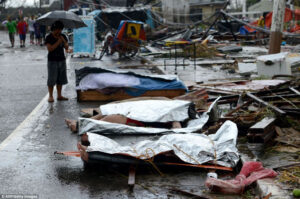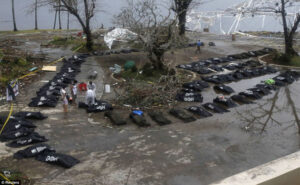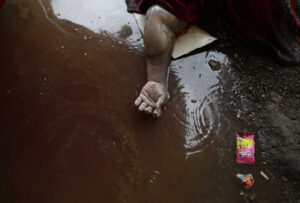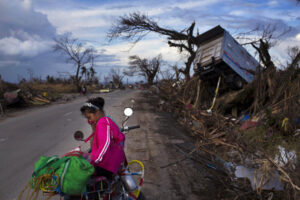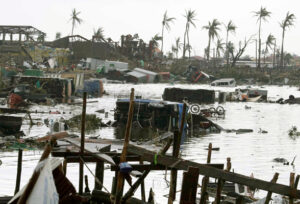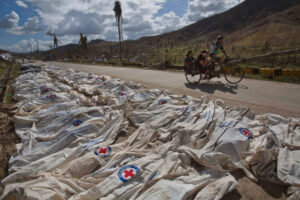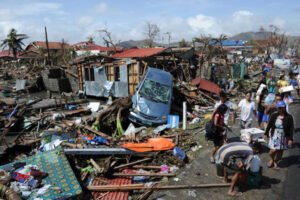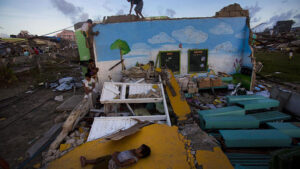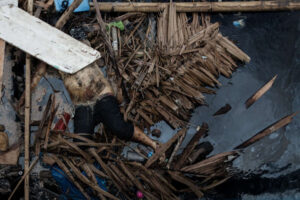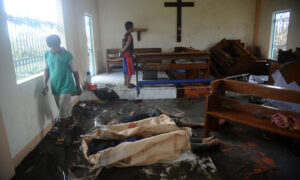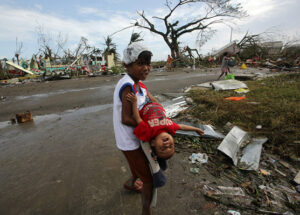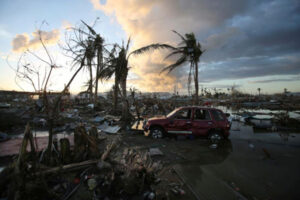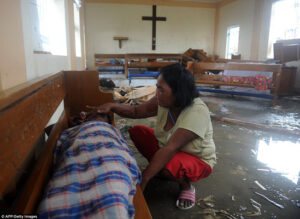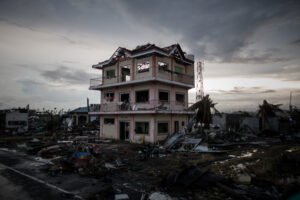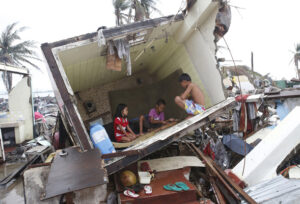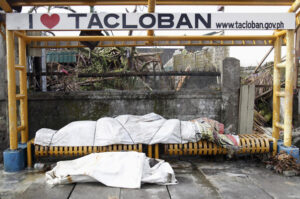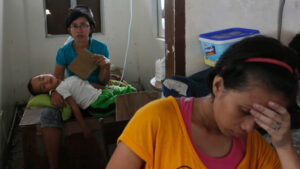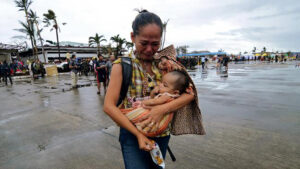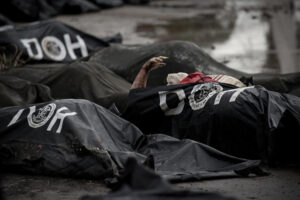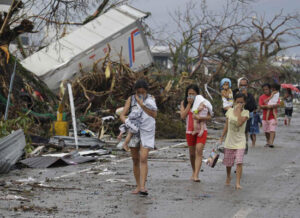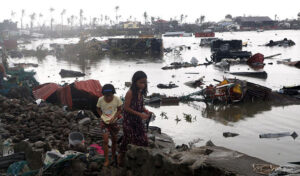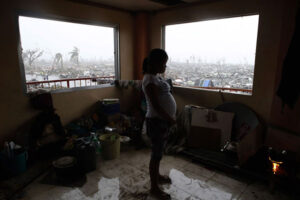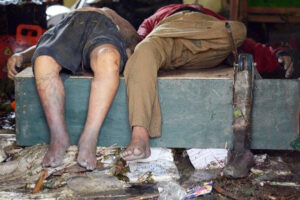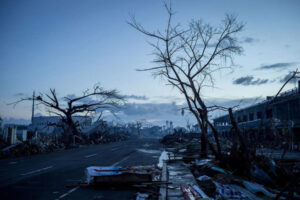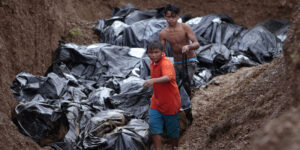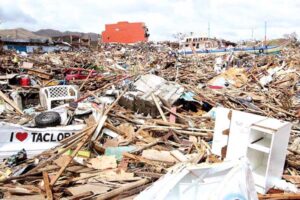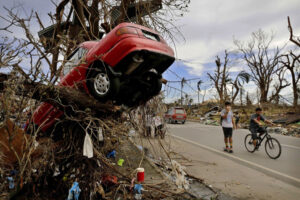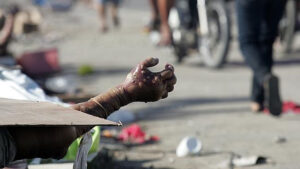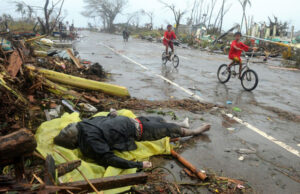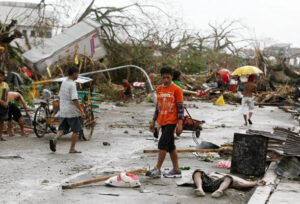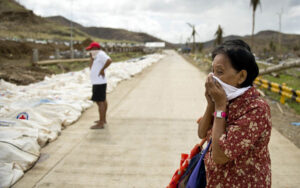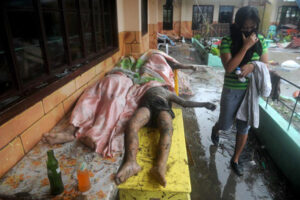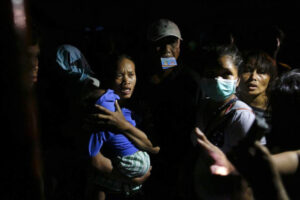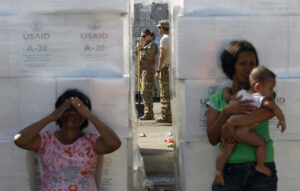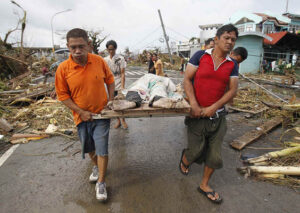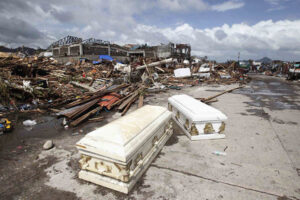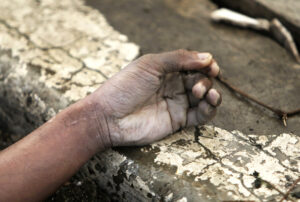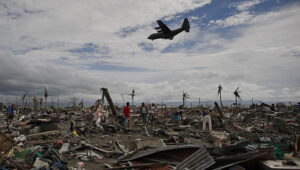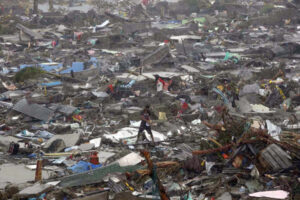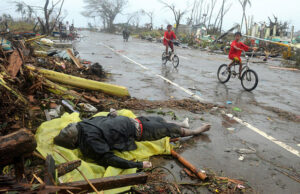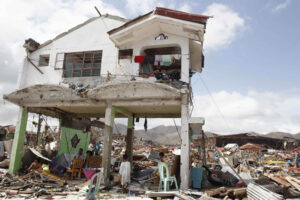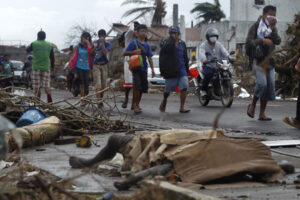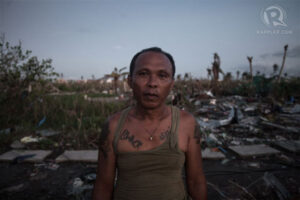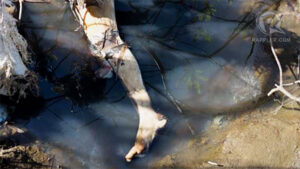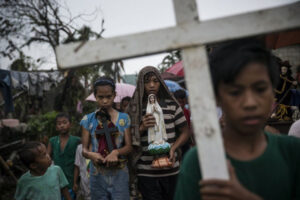On November 8, 2013, Super Typhoon Yolanda (international name “Haiyan”) made landfall in the Eastern Visayan Islands of the Philippines. With winds of up to 195 mph, it is regarded as the strongest tropical storm of all time. It killed over 7,000 people, left over 4,000,000 people homeless, or nearly half of the population of the Eastern Visayas.
The death and destruction of this disaster was compounded by the fact that recovery efforts have been, at best, fitful and haphazard, plagued by delays and confusion in relief efforts from both government and private agencies. Over 138,000 families still live in tents, houses and buildings lie damaged, unemployment is wide spread, and reports of human trafficking abound.
To make matters worse, many of the dead remain unburied and survivors have been forced to live amid the decaying remains of corpses now mixed in with other debris. The identification and proper disposal of the dead have been made more difficult by the conflicting mandates given to government agents, such as the National Bureau of Investigation and the Department of Health, with regard to the protocols for identifying disaster victims. Indeed recent reports indicate that the government has now stopped counting the dead, and many of those who perished will remain lost and unmourned, occasionally returning as so many body parts washing up on the beach, tangled in fishnets, impaled on broken tree trunks, or mixed in with the garbage left on the streets.
Photo credits below.
In the wake of Yolanda, I started to archive photos of its cataclysmic aftermath mostly in Leyte and in the capitol of Tacloban, which was the hardest hit. The photos that appear here were taken from the web, found scattered like so much debris after a storm. Once assembled, I was struck by their effect. Photographs are supposed to make you see for the sake of remembering. These images, however, show you something else: that something cannot be shown. They disclose the loss that remains lost and so elude disclosure. For this reason, the photographs engage the senses, but suspend any attempt at memorialization. At first, I thought this album would be a way of memorializing the dead, the living and the living-dead. But that proved impossible.
From a distance, the eye strains to take in these images to the point where they stop being mere images. That’s perhaps because in conveying the acute pain and utter decimation of the people of Tacloban, they also repeat them.
For the viewer of these photos, there ceases to be a safe, aesthetic distance from which to see them. Instead, the photos serve as materials for one’s dream work, invading one’s imagination, tugging at one’s conscience, in short, becoming part of one’s body, like tattoos written into one’s mind. Contagious images, insistent like ghosts returning to haunt the living.
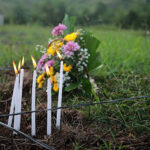
Yet, we deceive ourselves into thinking that the suffering we bear when we look at these photos are anything even remotely similar to what the victims and survivors must feel. There is an unbridgeable gap that separates us here from those whose grief we vicariously share over there.
The power of these photographs, then, lies in reminding us of the persistence of this difference: the singularity of the event of disaster as it visits each and every individual, the refusal of the particular moment of pain to be sublated and sublimated into some general lesson about human mortality or lack of preparedness, or climate change, or some other globalizing narrative about the history of the future. These photos by bringing us close to death, stir the sense of the sublime, but a sublime held at a standstill. What we apprehend is always far more than what we can comprehend.
If anything, these photos point to moments when narratives fail, and fail completely. Reflection is of no use, and experience no guide. These are photos of radical nihilism, if such a thing exists. And so as much as we seek to memorialize this disastrous event, there is also something about these photos that prevent such memorialization and refuse the consolation of mourning.
For now, only chaos: the mixture of the living and the dead, of corpses and garbage. Life, of course, continues elsewhere, outside the time of these photos, as people begin to tell stories, hold officials accountable, reunite with their families, begin to rebuild, or plan their departure. But as long as you look at these photos, living in their frozen time, your eyes remain fixed on what is absent, on what cannot yet be told, on what is beyond retrieval and relief. In the end, this can only be an archive of oblivion, productive of counter-memory.
Photo Credits:
1. Dondi Tawato, Getty Images
2. Bulitt Marquez, Associated Press
3. Associated Press
4. Associated Press
5. Associated Press
6. Associated Press
7. Associated Press
8. Reuters
9. Reuters
10. Reuters
11. Aaron Favilla, AP
12. ABC Australia
13. Philippe Lopez, Getty Images
14. Retuers
15. David Guttenfelder, AFP
16. Associated Press
17. Erik de Castro, Reuters
18. Philippe Lopez, Getty Images
19. Reuters
20. Bulitt Marquez, AP
21. Vincent Yu, AP
22. AFP Getty Image
23. David Guttenfelder, AFP
24. David Guttenfelder, AFP
25. Erik de Castro, Retuers
26. Erick de Castro, Reuters
27. Getty Images
28. Chris McGrath, Getty Images
29. Getty Images
30. Associated Press
31. Ken Frayer, Getty Images
32. Bulitt Marquez, AP
33. Noel Celis, AFP Getty Images
34. Associated Press
35. Odd Anderson, AFP
36. Reuters
37. Reuters
38. Reuters
39. Romeo Ranoco, Reuters
40. Romeo Ranoco, Reuters
41. Associated Press
42. Getty Images
43. Reuters
44. Noel Celis, AFP
45. Romeo Ranoco, Reuters
46. Reuters
47. Carlo Gabuco, Getty Images
48. Carlo Gabuco, Getty Images
49. Dan Kitwood, Getty Images


